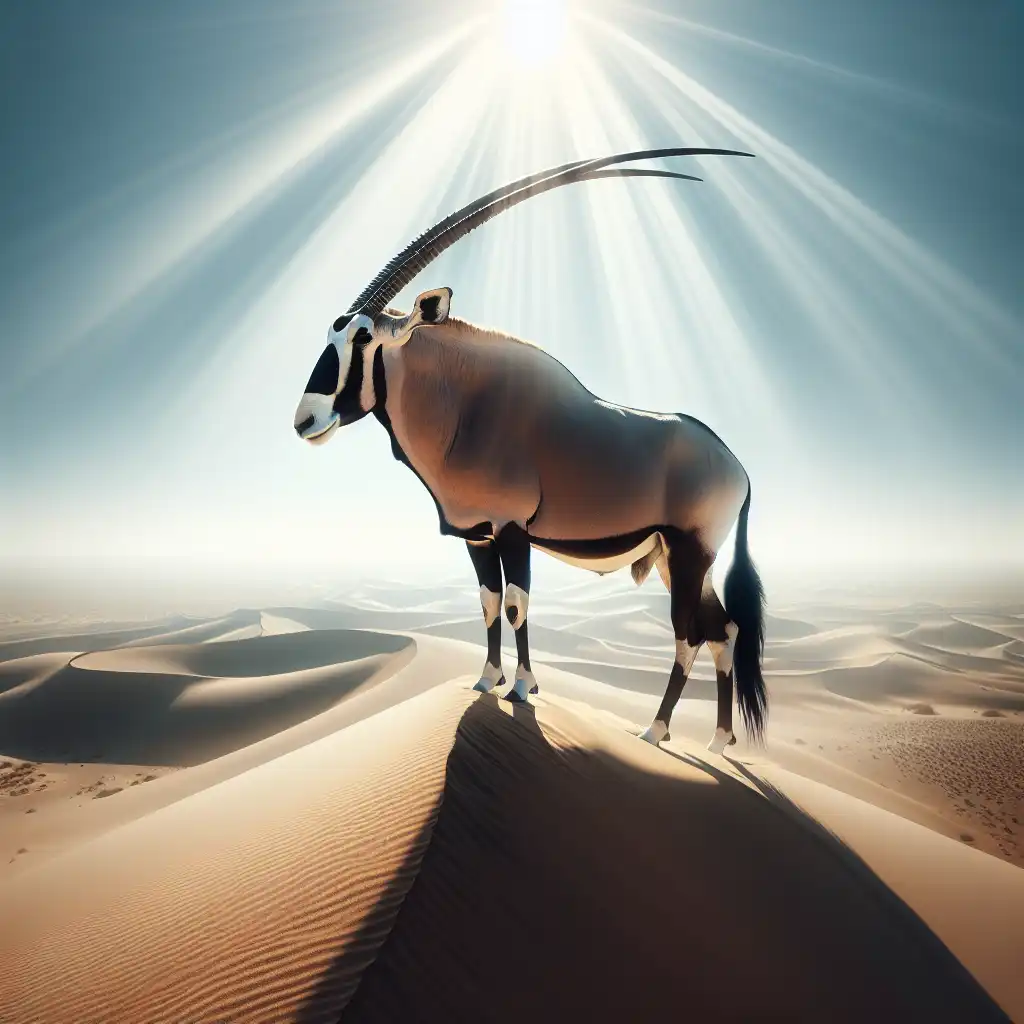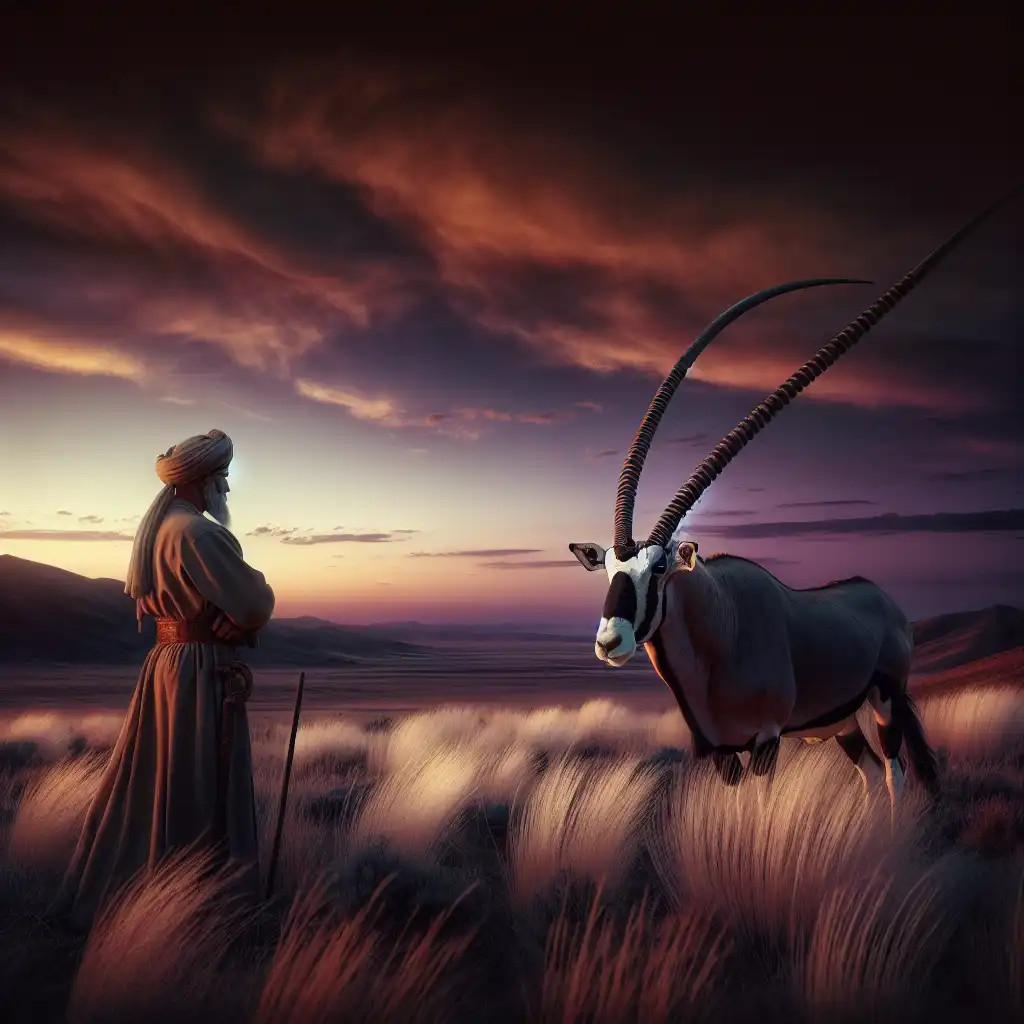
Oryx
Geographical Origin
Oryx are indigenous to Africa and Asia, often associated with deserts and arid regions.  The oryx is superbly adapted to life in the harsh desert conditions.
The oryx is superbly adapted to life in the harsh desert conditions.
Conservation Status
Some oryx species are endangered, so they often symbolize conservation efforts.  She adopted an Arabian oryx through a wildlife conservation program.
She adopted an Arabian oryx through a wildlife conservation program.
Distinctive Horns
Oryx are noted for their long, straight horns; they're a prominent feature in descriptions.  The hunter admired the oryx's majestic horns.
The hunter admired the oryx's majestic horns.